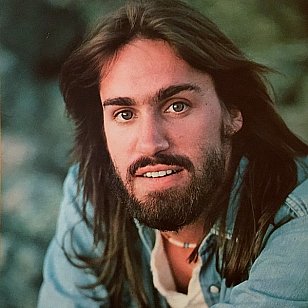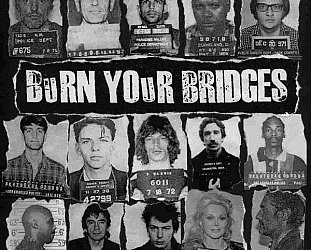Graham Reid | | 3 min read

Even after a long lifetime of following music – often down blind alleys or into unnerving places – it always surprises me how many albums, artists and genres went past me.
I got the whole Kraftwerk, Can, Neu! and Popul Vuh thing with diversions into Cluster and so on – but Sparks and Yellow Magic Orchestra went right on by.
I have more albums by Supertramp, who I don't like, than by Cher who I do.
I have all the early Pink Floyd albums and even the awful The Wall which I find bombastic and offensively unlistenable, but until a few years ago never had a copy of Dark Side of the Moon.
And, hand on heart, until 2017 I had never heard Hotel California in its entirety.
I listen to more African and Indian albums than dreary or mindlessly cheerful Irish songs.
At least a decade ago I realised that just about all of that “sensitive singer-songwriter” movement of the Seventies had gone by without troubling me.
Aside from Jackson Browne's Pretender album which I loved and of course a few Joni Mitchell ones, I'd by-passed the various Taylors (James, Livingston and I think there was another), Nicolette Larson, most of Linda Ronstadt . . .
I'd been diverted by Warren Zevon and Harry Nilsson as great (if darker and more cynical) songwriters but some considerable while back I decided to investigate that whole genre.
Which explains why I have a couple of Dan Fogelberg albums on my shelf and how this came to hand when I was pulling albums out at random for this column, The Album Considered.
Let it be said that for years I thought Dan Fogelberg was the same Dan as in England Dan and John Ford Coley (whose sole song I know is that awful MOR soft-rock thing I'd Really Love to See You Tonight).
Seemingly not.
 But here's the thing.
But here's the thing.
Even though I must have listened to this Phoenix album while doing my "research" I could barely recall a note of it when I went to consider it.
Aside from that cloying Longer which I believe was the hit: “Longer than there's been stars up in the heavens I've been in love with you”.
Right there was everything I disliked about this movement with its arch poetry, saccharine sincerity and appropriated natural imagery which was such a cliché.
But that song is nestled in the middle of the second side. Before then . . .
After a short instrumental Fogelberg leaps in with the driving seven minute title track (“I have cried too long, no more sorrow, got to carry on . . . “) which rises to the occasion about five minutes in with his guitar solo as he escapes the clutches of an “old lady” and is no more living someone else's dream.
Later there is her “gypsy wind” (gypsies were big in the S-S-S movement) and women who have seduced his soul and heart . . . but Dan is maturing and moving on.
The Last to Know is a soft-rock peep behind the curtains of a relationship which is ending; Wishing on the Moon is a poke at some enemy but lacks any real venom in its AOR delivery; Heart Hotels strains the metaphor of rooms and halls in a dreary ballad with sax by Tom Scott; then there is Longer . . .
And more.
The most engaged song here – on an emotional and political level – is the anti-nuke/Three Mile Island song Face the Fire (“people are running from what they can't even see”), an issue which really grabbed the attention of the SSSs in early '79 as this album was being recorded.
Fogelberg's gut-driven response sounds more authentic than the studied and crafted emotions elsewhere. But again, his voice is hardly the most distinctive even when he's angry and so you can understand his appeal to laidback post-hippie Californians and radio jocks on AOR stations.
I can't shake the association of “Fogelberg” which to me sounds like a brand of white bread with some grains which are supposed to be good for you.
This album sounds a bit like that: the tattered relationship in The Last to Know and Face the Fire are the grains to give substance . . . but most of the rest, professionally executed thought it might be by a fine band, is just white bread pop.
He's a very good guitarist though.
But I won't be moving on to The Innocent Age which is the other album – a double – I have by him.
Research is such a waste of time, huh?
.
You can hear this album on Spotify here
.
Elsewhere occasionally revisits albums -- classics sometimes, but more often oddities or overlooked albums by major artists -- and you can find a number of them starting here.







post a comment